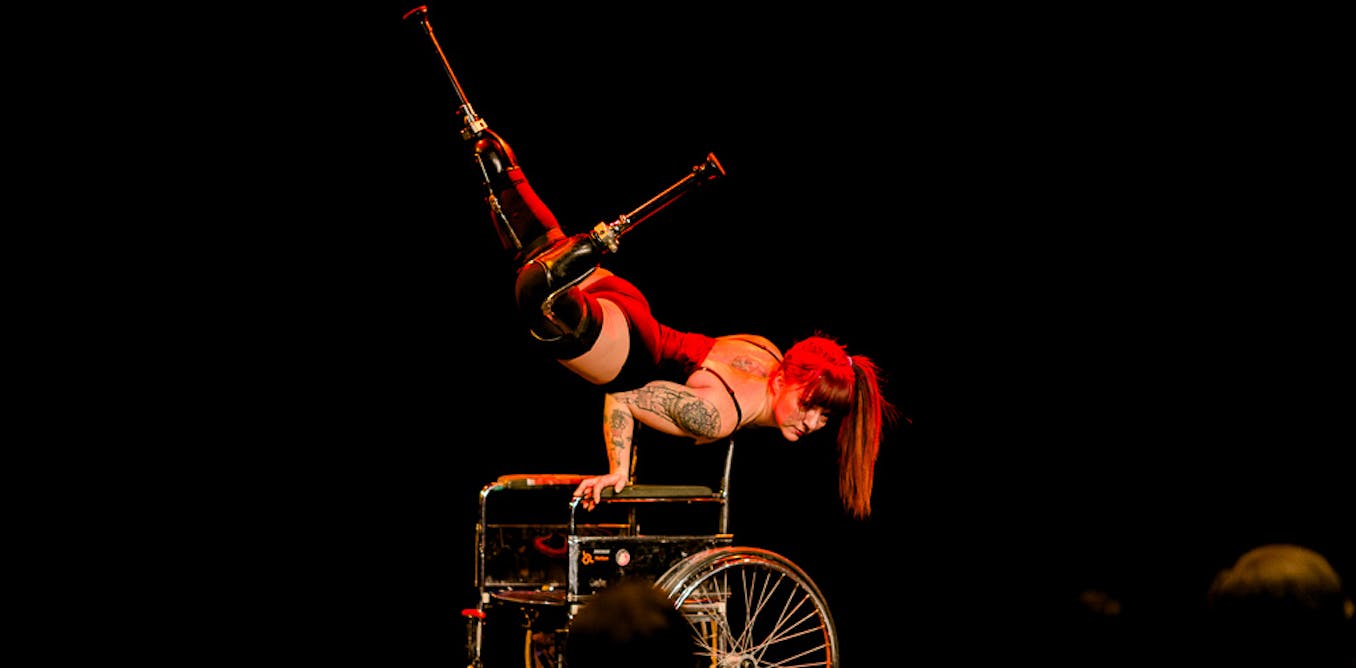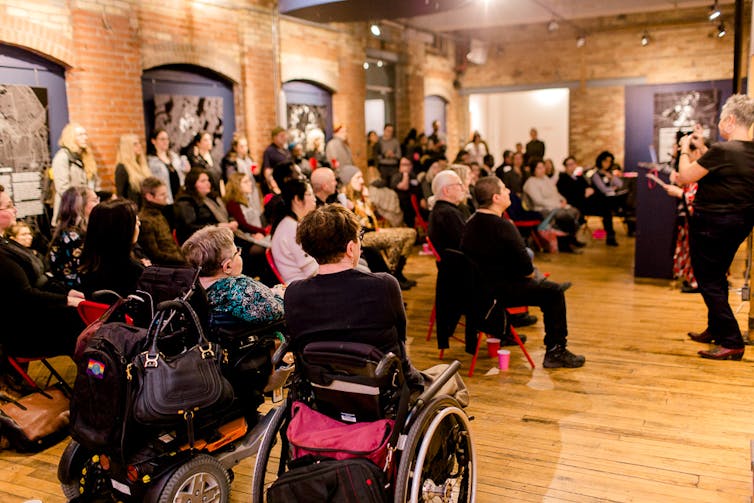It’s possible that I shall make an ass of myself. But in that case one can always get out of it with a little dialectic. I have, of course, so worded my proposition as to be right either way (K.Marx, Letter to F.Engels on the Indian Mutiny)
Friday, January 10, 2020
Strong winds create Australian 'megablaze'
Issued on: 10/01/2020 - 10:56

Eden (Australia) (AFP) EDEN NO MORE
Gale-force winds in Australia merged two enormous fires into a megablaze across land almost four times the area of New York City on Friday, while thousands rallied to again demand action on climate change.
"The conditions are difficult today," said Shane Fitzsimmons, rural fire service commissioner for New South Wales state, after days of relative calm.
"It's the hot, dry winds that will prove once again to be the real challenge."
Temperatures soared above 40 degrees Celsius (104 degrees Fahrenheit) in parts of New South Wales and neighbouring Victoria, where attention was focused on the two fires that linked to form yet another monster blaze.
A "state of disaster" was extended 48 hours ahead of Friday's forecast of scorching temperatures, and evacuation orders were issued for areas around the New South Wales-Victoria border.
New South Wales Premier Gladys Berejiklian said there were more than 130 fires burning in the state, with just over 50 not yet under control.
On Kangaroo Island off south Australia, the largest town was cut off as firefighters battled dangerous infernos, forcing some residents to flee to the local jetty.
The catastrophic bushfires have killed at least 26 people, destroyed more than 2,000 homes and scorched some eight million hectares (80,000 square kilometres) -- an area the size of Ireland.
University of Sydney scientists estimate one billion mammals, birds and reptiles have been killed in the fires.
The severe conditions have been fuelled by a prolonged drought and worsened by climate change, with experts warning that such massive blazes were becoming more frequent and intense.
Australia experienced its driest and hottest year on record in 2019, with its highest average maximum temperature of 41.9 degrees Celsius recorded in mid-December.
- 'Scott, take it personally' -
In Sydney and Melbourne, thousands of people again took to the streets to demand Australia's conservative government do more to tackle global warming and reduce coal exports.
"Change the politics not the climate" read one sign, reflecting an increasingly charged argument over the cause of the fires.
Researchers say the bushfire emergency has sparked an online disinformation campaign "unprecedented" in the country's history, with bots deployed to shift blame for the blazes away from climate change.
One hashtag in particular, #arsonemergency, has gained traction rapidly and conservative-leaning newspapers, websites and politicians across the globe have promoted the theory that arson is largely to blame, rather than climate change, drought or record high temperatures.
Timothy Graham, a digital media expert at the Queensland University of Technology, told AFP his research showed half of the Twitter users deploying the hashtag displayed bot- and troll-like behaviour.
"Our findings show a concerted effort aimed to misinform the public about the cause of the bushfires," Graham said.
"The campaign is nothing on the scale of what we have been seeing in other countries, such as the 2016 US election, but this amount of disinformation in Australia is unprecedented."
Prime Minister Scott Morrison on Friday tried to parry journalists' questions about whether climate change would make horrific bushfire seasons the norm.
"Look, we have covered that on a number of occasions now," Morrison said testily, adding that reviews will take place once the bushfire season is over.
Towamba volunteer firefighter Tony Larkings, 65, said battling the fires in recent weeks had been a "hot, dirty and dangerous" task.
"It's been horrendous. It's never been like this before," he told AFP.
He was deeply critical of Morrison's response to the bushfires, calling it mere "lip service" and slamming the leader's response to public criticism.
"His great statement was 'I don't take this personally'. Scott, take it personally," Larkings said.
© 2020 AFP
Australian authorities advise nearly a quarter million people to 'Get out' ahead of heat wave
Issued on: 10/01/2020 - 06:08

Australian firefighters in Corryong, north-eastern Victoria,
on January 7, 2020. © Jason Edwards, REUTERS
Text by:NEWS WIRES|
Video by:FRANCE 24Follow
Australian authorities urged nearly a quarter of a million people to evacuate their homes on Friday and prepared military backup as soaring temperatures and erratic winds were expected to fan deadly bushfires across the east coast.
Temperatures were expected to shoot well above 40 degrees Celsius (104 degrees Fahrenheit) in several parts of the country on Friday, accompanied by high winds, threatening to inflame fires that have already left thousands of people homeless.
"If you can get out, you should get out, you shouldn't be in the remote and forested parts of our State," Andrew Crisp, emergency management commissioner for the state of Victoria, told the Australian Broadcasting Corporation.
Emergency alert text messages had been sent to 240,000 people in Victoria state alone, telling them to leave, Crisp said. People in high-risk regions in New South Wales and South Australia states were also urged to think about leaving, but authorities had not provided numbers.
Twenty-seven people have been killed and thousands subjected to repeat evacuations as monster - and unpredictable - fires have scorched through more than 10.3 million hectares (25.5 million acres) of land, an area the size of South Korea.
John White, Mayor of East Gippsland, an area that was ravaged by fires on New Year's Eve, told Reuters that residents were on the move: "People aren't taking any chances."
Prime Minister Scott Morrison said he had given instructions to the military so "that they are to stand ready to move and support immediately" as firefighters battle 150 blazes across the country.
Australia's wildfires have dwarfed other catastrophic blazes around the world. Combining 2019 fires in California, Brazil and Indonesia still amounts to less than half the burnt area in Australia.
Australia's government has maintained there is no direct link between climate change and the devastating bushfires, a stance that has prompted campaigners to plan worldwide protests for Friday.
"We don't want job destroying, economy destroying, economy wrecking targets and goals which won't change the fact that there are bushfires or anything like that in Australia," Morrison told 2GB Radio, referring to calls for the government to commit to higher carbon emissions cuts.
Following are some highlights of what is happening in the bushfire crisis:
There were 134 fires ablaze across New South Wales, with around 50 uncontained on Friday. All other fires were at the "advice" level, the lowest alert rating.
Victoria state had 16 fires, two of which were so severe that evacuation orders have been issued. One more fire was at an emergency level.
In South Australia state, nine fires were ablaze, one of which was at a emergency level.
Climate protests were planned for Friday in several cities, including Melbourne, Sydney and Canberra, targeting the Australian government handling of the crisis and its position on climate change.
Prime Minister Morrison said on Friday he was considering holding a wide-ranging national inquiry into the bushfires after the immediate crisis had passed.
NSW authorities said just shy of 2,000 homes have been destroyed in the state, half of those in the past 10 days.
Australian cricketer Shane Warne's prized "baggy green" cap raised more than A$1 million at an auction for bushfire relief efforts
Authorities have warned that the huge fires, spurred by high temperatures, wind and a three-year drought, will persist until there is substantial rainfall. The weather agency said there was no sign of that for months.
Ecologists at the University of Sydney have estimated 1 billion animals have been killed or injured in the bushfires, potentially destroying ecosystems.
Moody's Analytics said the cost of the fires could easily surpass that of deadly 2009 Black Saturday fires that destroyed 450,000 hectares (1.1 million acres) of land, which cost an estimated A$4.4 billion.
Morrison has pledged A$2 billion ($1.4 billion) to a newly created National Bushfire Recovery Agency.
About 100 firefighters from the United States and Canada are helping, with another 140 expected in coming weeks.
The fires have emitted 400 megatonnes of carbon dioxide and produced harmful pollutants, the European Union's Copernicus monitoring programme said.
Smoke has drifted across the Pacific, affecting cities in South America, and may have reached the Antarctic, the U.N. World Meteorological Organization said.
(REUTERS)
Issued on: 10/01/2020 - 10:56

Eden (Australia) (AFP) EDEN NO MORE
Gale-force winds in Australia merged two enormous fires into a megablaze across land almost four times the area of New York City on Friday, while thousands rallied to again demand action on climate change.
"The conditions are difficult today," said Shane Fitzsimmons, rural fire service commissioner for New South Wales state, after days of relative calm.
"It's the hot, dry winds that will prove once again to be the real challenge."
Temperatures soared above 40 degrees Celsius (104 degrees Fahrenheit) in parts of New South Wales and neighbouring Victoria, where attention was focused on the two fires that linked to form yet another monster blaze.
A "state of disaster" was extended 48 hours ahead of Friday's forecast of scorching temperatures, and evacuation orders were issued for areas around the New South Wales-Victoria border.
New South Wales Premier Gladys Berejiklian said there were more than 130 fires burning in the state, with just over 50 not yet under control.
On Kangaroo Island off south Australia, the largest town was cut off as firefighters battled dangerous infernos, forcing some residents to flee to the local jetty.
The catastrophic bushfires have killed at least 26 people, destroyed more than 2,000 homes and scorched some eight million hectares (80,000 square kilometres) -- an area the size of Ireland.
University of Sydney scientists estimate one billion mammals, birds and reptiles have been killed in the fires.
The severe conditions have been fuelled by a prolonged drought and worsened by climate change, with experts warning that such massive blazes were becoming more frequent and intense.
Australia experienced its driest and hottest year on record in 2019, with its highest average maximum temperature of 41.9 degrees Celsius recorded in mid-December.
- 'Scott, take it personally' -
In Sydney and Melbourne, thousands of people again took to the streets to demand Australia's conservative government do more to tackle global warming and reduce coal exports.
"Change the politics not the climate" read one sign, reflecting an increasingly charged argument over the cause of the fires.
Researchers say the bushfire emergency has sparked an online disinformation campaign "unprecedented" in the country's history, with bots deployed to shift blame for the blazes away from climate change.
One hashtag in particular, #arsonemergency, has gained traction rapidly and conservative-leaning newspapers, websites and politicians across the globe have promoted the theory that arson is largely to blame, rather than climate change, drought or record high temperatures.
Timothy Graham, a digital media expert at the Queensland University of Technology, told AFP his research showed half of the Twitter users deploying the hashtag displayed bot- and troll-like behaviour.
"Our findings show a concerted effort aimed to misinform the public about the cause of the bushfires," Graham said.
"The campaign is nothing on the scale of what we have been seeing in other countries, such as the 2016 US election, but this amount of disinformation in Australia is unprecedented."
Prime Minister Scott Morrison on Friday tried to parry journalists' questions about whether climate change would make horrific bushfire seasons the norm.
"Look, we have covered that on a number of occasions now," Morrison said testily, adding that reviews will take place once the bushfire season is over.
Towamba volunteer firefighter Tony Larkings, 65, said battling the fires in recent weeks had been a "hot, dirty and dangerous" task.
"It's been horrendous. It's never been like this before," he told AFP.
He was deeply critical of Morrison's response to the bushfires, calling it mere "lip service" and slamming the leader's response to public criticism.
"His great statement was 'I don't take this personally'. Scott, take it personally," Larkings said.
© 2020 AFP
Australian authorities advise nearly a quarter million people to 'Get out' ahead of heat wave
Issued on: 10/01/2020 - 06:08

Australian firefighters in Corryong, north-eastern Victoria,
on January 7, 2020. © Jason Edwards, REUTERS
Text by:NEWS WIRES|
Video by:FRANCE 24Follow
Australian authorities urged nearly a quarter of a million people to evacuate their homes on Friday and prepared military backup as soaring temperatures and erratic winds were expected to fan deadly bushfires across the east coast.
Temperatures were expected to shoot well above 40 degrees Celsius (104 degrees Fahrenheit) in several parts of the country on Friday, accompanied by high winds, threatening to inflame fires that have already left thousands of people homeless.
"If you can get out, you should get out, you shouldn't be in the remote and forested parts of our State," Andrew Crisp, emergency management commissioner for the state of Victoria, told the Australian Broadcasting Corporation.
Emergency alert text messages had been sent to 240,000 people in Victoria state alone, telling them to leave, Crisp said. People in high-risk regions in New South Wales and South Australia states were also urged to think about leaving, but authorities had not provided numbers.
Twenty-seven people have been killed and thousands subjected to repeat evacuations as monster - and unpredictable - fires have scorched through more than 10.3 million hectares (25.5 million acres) of land, an area the size of South Korea.
John White, Mayor of East Gippsland, an area that was ravaged by fires on New Year's Eve, told Reuters that residents were on the move: "People aren't taking any chances."
Prime Minister Scott Morrison said he had given instructions to the military so "that they are to stand ready to move and support immediately" as firefighters battle 150 blazes across the country.
Australia's wildfires have dwarfed other catastrophic blazes around the world. Combining 2019 fires in California, Brazil and Indonesia still amounts to less than half the burnt area in Australia.
Australia's government has maintained there is no direct link between climate change and the devastating bushfires, a stance that has prompted campaigners to plan worldwide protests for Friday.
"We don't want job destroying, economy destroying, economy wrecking targets and goals which won't change the fact that there are bushfires or anything like that in Australia," Morrison told 2GB Radio, referring to calls for the government to commit to higher carbon emissions cuts.
Following are some highlights of what is happening in the bushfire crisis:
There were 134 fires ablaze across New South Wales, with around 50 uncontained on Friday. All other fires were at the "advice" level, the lowest alert rating.
Victoria state had 16 fires, two of which were so severe that evacuation orders have been issued. One more fire was at an emergency level.
In South Australia state, nine fires were ablaze, one of which was at a emergency level.
Climate protests were planned for Friday in several cities, including Melbourne, Sydney and Canberra, targeting the Australian government handling of the crisis and its position on climate change.
Prime Minister Morrison said on Friday he was considering holding a wide-ranging national inquiry into the bushfires after the immediate crisis had passed.
NSW authorities said just shy of 2,000 homes have been destroyed in the state, half of those in the past 10 days.
Australian cricketer Shane Warne's prized "baggy green" cap raised more than A$1 million at an auction for bushfire relief efforts
Authorities have warned that the huge fires, spurred by high temperatures, wind and a three-year drought, will persist until there is substantial rainfall. The weather agency said there was no sign of that for months.
Ecologists at the University of Sydney have estimated 1 billion animals have been killed or injured in the bushfires, potentially destroying ecosystems.
Moody's Analytics said the cost of the fires could easily surpass that of deadly 2009 Black Saturday fires that destroyed 450,000 hectares (1.1 million acres) of land, which cost an estimated A$4.4 billion.
Morrison has pledged A$2 billion ($1.4 billion) to a newly created National Bushfire Recovery Agency.
About 100 firefighters from the United States and Canada are helping, with another 140 expected in coming weeks.
The fires have emitted 400 megatonnes of carbon dioxide and produced harmful pollutants, the European Union's Copernicus monitoring programme said.
Smoke has drifted across the Pacific, affecting cities in South America, and may have reached the Antarctic, the U.N. World Meteorological Organization said.
(REUTERS)
Prince Harry's wife Meghan returns to Canada amid royal storm
Issued on: 10/01/2020 -

London (AFP)
Prince Harry's wife Meghan has returned to Canada following the couple's bombshell announcement that they were quitting their frontline royal duties, their spokeswoman said on Friday.
The Duke and Duchess of Sussex spent an extended Christmas break in Canada with their baby son Archie, before returning to break the news that has rocked the royal family.
"I can confirm reports that the duchess is in Canada," the couple's spokeswoman told AFP, without providing further details.
The Daily Mail newspaper reported that the royals left eight-month-old Archie with his nanny in Canada when they flew to Britain earlier this week.
It said Meghan, a former US television actress, headed back to rejoin him on Thursday and "she may stay there for the foreseeable future".
An unnamed source was quoted as saying by the domestic Press Association news agency the duchess had travelled to the UK "to attend some meetings" before returning to Canada
Senior royals were caught off guard by Wednesday's announcement that the couple wanted to "step back" from their roles.
Queen Elizabeth II reportedly held crisis calls on Thursday involving Harry, his brother Prince William and their father Prince Charles, the heir to the throne.
William, Harry and their wives have been viewed as the modern face of the royal family, hailed for bringing fresh energy into the institution.
But Harry and Meghan last year admitted to struggling with the spotlight following their wedding at Windsor Castle in May 2018 and Archie's birth a year later.
The couple have lashed out at negative news coverage -- Harry calling some of it racist -- and taken several papers to court.
The prince also confirmed he was growing apart from his brother, who is second in line to the throne.
The couple said they wanted to forge "a progressive new role", split their time between Britain and North America and become financially independent.
A palace source on Thursday said the queen had instructed aides to work "at pace" with Meghan and Harry and the government "to find workable solutions".
Key questions include whether they will keep their royal titles and how much of their funding -- mostly from Prince Charles -- they will maintain.
The couple's decision follows a turbulent year for the wider royal family.
Prince Andrew announced he was retiring from public duties after a disastrous TV interview about his friendship with the late US sex offender Jeffrey Epstein.
© 2020 AFP
Issued on: 10/01/2020 -

London (AFP)
Prince Harry's wife Meghan has returned to Canada following the couple's bombshell announcement that they were quitting their frontline royal duties, their spokeswoman said on Friday.
The Duke and Duchess of Sussex spent an extended Christmas break in Canada with their baby son Archie, before returning to break the news that has rocked the royal family.
"I can confirm reports that the duchess is in Canada," the couple's spokeswoman told AFP, without providing further details.
The Daily Mail newspaper reported that the royals left eight-month-old Archie with his nanny in Canada when they flew to Britain earlier this week.
It said Meghan, a former US television actress, headed back to rejoin him on Thursday and "she may stay there for the foreseeable future".
An unnamed source was quoted as saying by the domestic Press Association news agency the duchess had travelled to the UK "to attend some meetings" before returning to Canada
Senior royals were caught off guard by Wednesday's announcement that the couple wanted to "step back" from their roles.
Queen Elizabeth II reportedly held crisis calls on Thursday involving Harry, his brother Prince William and their father Prince Charles, the heir to the throne.
William, Harry and their wives have been viewed as the modern face of the royal family, hailed for bringing fresh energy into the institution.
But Harry and Meghan last year admitted to struggling with the spotlight following their wedding at Windsor Castle in May 2018 and Archie's birth a year later.
The couple have lashed out at negative news coverage -- Harry calling some of it racist -- and taken several papers to court.
The prince also confirmed he was growing apart from his brother, who is second in line to the throne.
The couple said they wanted to forge "a progressive new role", split their time between Britain and North America and become financially independent.
A palace source on Thursday said the queen had instructed aides to work "at pace" with Meghan and Harry and the government "to find workable solutions".
Key questions include whether they will keep their royal titles and how much of their funding -- mostly from Prince Charles -- they will maintain.
The couple's decision follows a turbulent year for the wider royal family.
Prince Andrew announced he was retiring from public duties after a disastrous TV interview about his friendship with the late US sex offender Jeffrey Epstein.
© 2020 AFP
French unions warn of new protests as pension battle heats up
Issued on: 10/01/2020 -
Paris (AFP)
French union leaders on Friday began crunch meetings with Prime Minister Edouard Philippe and other top officials over a hotly contested pension overhaul that has sparked the country's longest rail strike in history.
Expectations of a breakthrough were low, however, after the government unveiled its draft law overnight that still contains a provision that would require people to work until 64 for a full pension -- a red flag for unions.
The move came after a fourth day of mass demonstrations since December by opponents of a reform that aims to sweep away France's 42 separate pension schemes in favour of a single system.
Some 452,000 people turned out across France for marches that were again marred by clashes with police and vandalism, with 27 people detained in Paris.
Rallies are again planned for Saturday and new protests have been called for three days starting next Tuesday.
"We have to step up our actions, and other sectors have to take up the baton," Benoit Teste of the FSU teachers' union said late Thursday.
The hardline CGT union, the largest among public-sector workers, this week began blocking refineries and fuel depots, which have already caused fuel shortages in some areas.
Train services and Paris metro lines were again curtailed Friday as France's longest-ever rail strike entered its sixth week, with services at the main station in Marseille halted by dozens of strikers who descended on the tracks.
The government has said it is ready to compromise on the "pivot age" of 64, which it says is needed to erase a deficit that could reach 17 billion euros ($19 billion) by 2025.
That it two years beyond the official retirement age of 62, and people who retire beforehand would see their pensions docked.
But even the moderate CFDT union, France's largest, has demanded the pivot age be scrapped, though it still supports the creation of single points-based system.
It has urged the government to hold a separate "financing conference" with unions on possible alternatives to the pivot age, including higher contributions from employers.
The government's draft bill says measures for ensuring a balanced pensions budget will be discussed, but the pivot age will prevail if no agreement is reached by September 2021.
© 2020 AFP
Issued on: 10/01/2020 -

Paris (AFP)
French union leaders on Friday began crunch meetings with Prime Minister Edouard Philippe and other top officials over a hotly contested pension overhaul that has sparked the country's longest rail strike in history.
Expectations of a breakthrough were low, however, after the government unveiled its draft law overnight that still contains a provision that would require people to work until 64 for a full pension -- a red flag for unions.
The move came after a fourth day of mass demonstrations since December by opponents of a reform that aims to sweep away France's 42 separate pension schemes in favour of a single system.
Some 452,000 people turned out across France for marches that were again marred by clashes with police and vandalism, with 27 people detained in Paris.
Rallies are again planned for Saturday and new protests have been called for three days starting next Tuesday.
"We have to step up our actions, and other sectors have to take up the baton," Benoit Teste of the FSU teachers' union said late Thursday.
The hardline CGT union, the largest among public-sector workers, this week began blocking refineries and fuel depots, which have already caused fuel shortages in some areas.
Train services and Paris metro lines were again curtailed Friday as France's longest-ever rail strike entered its sixth week, with services at the main station in Marseille halted by dozens of strikers who descended on the tracks.
The government has said it is ready to compromise on the "pivot age" of 64, which it says is needed to erase a deficit that could reach 17 billion euros ($19 billion) by 2025.
That it two years beyond the official retirement age of 62, and people who retire beforehand would see their pensions docked.
But even the moderate CFDT union, France's largest, has demanded the pivot age be scrapped, though it still supports the creation of single points-based system.
It has urged the government to hold a separate "financing conference" with unions on possible alternatives to the pivot age, including higher contributions from employers.
The government's draft bill says measures for ensuring a balanced pensions budget will be discussed, but the pivot age will prevail if no agreement is reached by September 2021.
© 2020 AFP
Iran invites Boeing, US investigators to help probe plane crash likely downed by missile

Iran has invited Boeing and US aviation investigators to participate in the investigation into a Ukrainian jetliner that crashed earlier this week at a time of soaring tensions between Washington and Tehran, killing all 176 people on board, state media reported Friday.
The state-run IRNA news agency quoted a Foreign Ministry spokesman as saying Iran "has invited both Ukraine and the Boeing company to participate in the investigations”. The spokesman, Abbas Mousavi, said it will also welcome experts from other countries whose citizens died in the crash.
The move came after Canadian Prime Minister Justin Trudeau, citing Canadian and other intelligence agencies, said the plane appeared to have been unintentionally hit by an Iranian missile. The crash occurred hours after Iran targeted US forces in two bases in Iraq to avenge the killing of its top general, Qassem Soleimani in a US airstrike.

Iran has invited Boeing and US aviation investigators to participate in the investigation into a Ukrainian jetliner that crashed earlier this week at a time of soaring tensions between Washington and Tehran, killing all 176 people on board, state media reported Friday.
The state-run IRNA news agency quoted a Foreign Ministry spokesman as saying Iran "has invited both Ukraine and the Boeing company to participate in the investigations”. The spokesman, Abbas Mousavi, said it will also welcome experts from other countries whose citizens died in the crash.
The move came after Canadian Prime Minister Justin Trudeau, citing Canadian and other intelligence agencies, said the plane appeared to have been unintentionally hit by an Iranian missile. The crash occurred hours after Iran targeted US forces in two bases in Iraq to avenge the killing of its top general, Qassem Soleimani in a US airstrike.
The US National Transportation Safety Board (NTSB) has accepted the invitation from Iran to participate in its investigation in Tehran, the agency confirmed late Thursday US time.
The NTSB said in a statement its Response Operations Center had received formal notification from Iran of Wednesday's crash. "The NTSB has designated an accredited representative to the investigation of the crash," the agency said.
A person briefed on the matter said it was unclear what, if anything, its representative would be able to do under US sanctions, Reuters reported.
The US is allowed to take part under global rules since the Boeing 737-800NG jet was designed and built there.
France 'available' to help probe
Canada, which had dozens of passengers onboard, has also assigned an expert, while a team from Ukraine held discussions in Tehran on Thursday.
Meanwhile French Foreign Minister Jean-Yves Le Drian on Friday said France is available to contribute its expertise if necessary to the crash probe.
Meanwhile French Foreign Minister Jean-Yves Le Drian on Friday said France is available to contribute its expertise if necessary to the crash probe.
Tehran has said it will provide consular facilities and visas for accredited investigators, said Farhad Parvaresh, Iran's representative at the International Civil Aviation Organization.
The Ukrainian airliner bound for Kiev crashed shortly after takeoff from Tehran’s Imam Khomeini Airport, killing all 176 passengers, including Iranian, Ukrainian, Canadian, Afghan and other nationals on board.
Video appears to show plane was hit
Tehran initially said it would cooperate with Ukraine, but not send the black boxes to the US, with which it has had no diplomatic relations for four decades.
But on Thursday, Trudeau confirmed mounting reports that the crash was likely caused by a missile strike, forcing Iranian cooperation with US parties in the investigation.
Trudeau's comments came as video emerged that appeared to show the moment the airliner was hit.
That and other footage posted on social media increasingly pointed to a catastrophic mistake by Tehran's air defense batteries in bringing down Ukraine International Airlines Flight PS752 early Wednesday.
Candle-light vigils
Families and friends of the victims of the Ukrainian plane crash have been mourning the loss of their loved ones in Iran, Ukraine and Canada.
Ukraine on Thursday held a national day of mourning. In Canada, hundreds of mourners held a candle-light vigil Thursday night in Toronto to remember 176 people killed.
At the vigil, people in Toronto – which has a large Iranian community – expressed anger and sadness over the tragedy.
"Somebody has to answer us back why this happened. They were innocent people who died," said one of those at the ceremony, Yasmin Roshan, 43.
Roshan, who came with his nine-year-old daughter, said he lost two friends in the crash.
He said he blamed US President Donald Trump, who last Friday ordered the killing of a top Iranian general in Iraq, sending tensions between Washington and Tehran soaring.
(FRANCE 24 with AFP, AP and REUTERS)

French government finally unveils pensions reforms but what's in it?
After two years of consultations and weeks of union-led strikes the French government has finally published its pension reform bill. Here's a look at some of the main points in it including the controversial "pivot age" of 64.

After two years of consultations and weeks of union-led strikes the French government has finally published its pension reform bill. Here's a look at some of the main points in it including the controversial "pivot age" of 64.
The text, described as a draft-bill (avant-projet de loi), includes 64 different articles and runs into dozens of pages.
The main aim of the government's reform is to introduce a single points-based system that would sweep away the country's 42 special pension schemes, many offering early retirement mainly to public workers.
Another controversial point, that has caused anger among unions is the plan to introduce a "pivot age" that would effectively see people having to work until 64 to gain a full pension - two years beyond the official retirement age of 62.
The government's draft bill, presented to certain elements of the French media on Thursday, covers both these controversial sticking points, which will no doubt anger the unions.
But many key points will remain up for discussion despite the publication of the bill.
French unions were not impressed by the government's move given that talks were set to continue with Prime Minister Edouard Philippe on Friday.
Leader of the hardline CGT union Philippe Martinez expressed anger they had not been sent a copy of the bill. He said he wasn't keen on being "made to look like an imbecile in front of the PM around issues that had already been written."
The fact the draft bill differs very little from the initial report published by Jean-Paul Delevoye, who lead the reform project, will no doubt exacerbate the anger felt by unions who accuse the government of not listening.
“It seems the government has decided to tough it out. It’s a high risk strategy," said John Lichfield, The Local's columnist.
"The lower turnout at yesterday’s marches and the weakening rail and Metro strikes appear to have persuaded Edouard Philippe – and Macron - that they can win a war of attrition.
“No concessions could possibly have pleased the militant unions, who simply want the government to surrender. But the daft law makes only a small concession to the moderates, led by the CFDT.”
“The controversial pivot age of 64 is maintained but can be replaced up to September 2021 if other of another way of financing the reform can be found. Will this be enough to bring the CFDT aboard? No.”
“If the dispute hardens, Macron will face a choice between surrendering to the CFDT and backing or sacking his Prime Minister, Edouard Philippe. For now, he is backing Philippe," he said.
The reforms for the most part will come into place in 2025 for those born after 1975 and in 2022 for those born in 2004. But there will be exceptions, for example for train drivers it will apply to those born after 1985.
What's in the bill?

French PM Edouard Philippe. AFP
"Pivot age" from 2022 unless unions come up with something better...
The "pivot age" so contested by unions is included in the bill albeit under a different name "âge d'equilibreé or "age of balance".
Under the plan the official retirement age will remain 62, but the government wants to introduce a "pivot age" of 64 that would open the door to a full pension.
People who retire before then would have to accept lower monthly payouts, while those who work beyond would see their pensions increase.
The government says the move is necessary as people start working later and living longer, otherwise there will be too few working people to support the bulk of retirees under the pay-as-you-go system.
Importantly the draft bill says the "âge d'équilibre" will be created in 2022 but will be the subject of negotiations with "social partners" who include the unions until September 2021 at the latest.
The government insists the debate is still open and have suggested the "age" could be changed if unions come up with a better solution that guarantees France's pension system is affordable and sustainable in the future.
This age for retiring on a full pension will be put in place progressively meaning it will be 64 for those who retire in 2027. The government says it could rise or fall depending on future life expectancy.
Certain professions such as police, soldiers, air traffic controllers and prison officers or those involving hardship will still be able to retire earlier on a full pension as they do now. They will pay higher contributions during their careers and the "pivot age" for these careers will be adapted accordingly.
Other French workers would still be able to retire at 62 legally, but obviously face receiving a lower pension.
As well as this, the bill will ensure that those workers who often have to work until 67 to earn a full pension will be able to retire at 64 without being penalised as they are under the current system.

Universal Points system
The universal pensions system based on points will enter into force in 2022 for younger workers and in 2025 for those born after after 1975.
Essentially the reform would create a single system based on points that would be accrued based on salary, so that "for each euro contributed, everyone gets the same pension rights".
The value of a point could change, but the government says unions will have their say on any changes, which would have to be approved by parliament.
The government says points are fairer to part-time workers
A national universal pensions fund (caisse nationale de retraite universelle) will be set up in December 2020 and be led by a board that will include representatives of trade unions. The board will be in charge of ensuring the pensions system remains sustainable.
Minimum pension at €1,000
One aspect of the reform the government has regularly pushed to try to win over public opinion is the minimum pension of €1,000.
From 2022 low-earners who have worked for the minimum number of years will be eligible for a minimum pension of €1,000 a month.
Teachers pensions guaranteed
Teachers have been joining the strikes and protests because they fear that a universal system would see their pensions fall dramatically. That's because they are - currently calculated based on their final six months salary rather than average earnings over 25 years, which will be future calculation under the universal system.
Prime Minister Edouard Philippe has said that: "It would be unacceptable for teachers to lose a single euro of their pension".
In the draft bill the government has tried to reassure teachers that they will not lose out because their salaries will be increased to ensure their pensions do not fall.
Anything else?
Other articles in the bill include a so-called "pension de reversion" which covers the pensions of widows/widowers after the death of their partner, plus guarantees to boost pensions for those with large families and for those who take parental leave to raise children.
What's to be decided?
The government still needs to lay out how each point in the universal system will be valued and how pensions will be calculated, plus how those on special pension regimes will be transferred over to the new system
THE RISE OF STALIN

Vladimir Moss
An Attempt to Understand Why Stalin, not Trotsky, Attained Supreme Power in the Soviet Union
The rise to power of Stalin over the whole of Russia and over all his fellow-Bolsheviks is one of the mysteries of Soviet history. In particular, historians have been surprised why it should have been Stalin, and not the more striking Trotsky, who conquered in their famous struggle for power in the 1920s. The question could be put – misleadingly, as we shall see – as follows: how did Stalin, the most undistinguished of the leading Bolsheviks from an intellectual point of view, the uncharismatic bureaucratic plodder (an early nickname was“Comrade Filing-Cabinet”(1) with little hold (in a personal sense) over his fellow Bolsheviks, the non-Russian, non-Slav, non-European ex-seminarian and bank robber, acquire, within ten years of the revolution, such ascendancy within the party and the nation that he could expel from both the party and the nation – Trotsky, the hero of 1905 and October and the Civil War, the brilliant writer and demagogue and courageous man of action, the dynamic,cultivated and popular European internationalist?As a provisional hypothesis to explain this fact we may apply to the Soviet situation the words of the ancient Greek historian Thucydides in his
History of the Peloponnesian War
: “Inferior minds were as a rule more successful; aware of their own defects and of the intelligence of their opponents, to whom they felt themselves inferior in debate, and by whose versatility of intrigue they were afraid of being surprised, they struck boldly and at once. Their enemies despised them, were confident of detecting their plots, and thought it needless to effect by violence what they could achieve by their brains, and so were taken off their guard and destroyed.”In agreement with this hypothesis, there is plenty of evidence that Trotsky grossly underestimated Stalin, “the outstanding mediocrity of our Party”, as he said to Sklyansky. Boris Bazhanov, Stalin’s secretary during the mid-twenties, confirms Isaac Deutscher’s opinion that “Trotsky felt it beneath his dignity to cross swords with a man as intellectually undistinguished and personally contemptible as Stalin”
2
. Trotsky also felt it beneath his dignity to indulge in the kind of political skulduggery that Stalin excelled in, especially the tactic of “divide and conquer”. Stalin’s very obscurity, the stealthy but steady way in which he acquired power, lulled his opponents into inactivity.Trotsky was like a hare, opening up a large lead very quickly but then sitting back and preening his whiskers, while Stalin the tortoise crept past him to the finishing-line. And indeed, we know that he was vain and arrogant,“treasuring his historic role”, in Lunacharsky’s words, in the looking-glass of his imagination. Stalin, too, was vain, but he hid this fault more carefully…

Vladimir Moss
Son of a British diplomat, born in London in 1949, educated at Charterhouse (1962-66), Oxford University (1967-70) and Surrey University (1972-28). Degrees in philosophy and psychology (B.A., Ph.D). Languages: French, Russian, ancient Greek and Latin. Research interests: Orthodox Christian Theology and History, World History, Russia since the Revolution. Religion: Orthodox Christian (since 1976). Widower, no children
How did Stalin emerge as leader of the USSR in 1929?:


Vladimir Moss
An Attempt to Understand Why Stalin, not Trotsky, Attained Supreme Power in the Soviet Union
The rise to power of Stalin over the whole of Russia and over all his fellow-Bolsheviks is one of the mysteries of Soviet history. In particular, historians have been surprised why it should have been Stalin, and not the more striking Trotsky, who conquered in their famous struggle for power in the 1920s. The question could be put – misleadingly, as we shall see – as follows: how did Stalin, the most undistinguished of the leading Bolsheviks from an intellectual point of view, the uncharismatic bureaucratic plodder (an early nickname was“Comrade Filing-Cabinet”(1) with little hold (in a personal sense) over his fellow Bolsheviks, the non-Russian, non-Slav, non-European ex-seminarian and bank robber, acquire, within ten years of the revolution, such ascendancy within the party and the nation that he could expel from both the party and the nation – Trotsky, the hero of 1905 and October and the Civil War, the brilliant writer and demagogue and courageous man of action, the dynamic,cultivated and popular European internationalist?As a provisional hypothesis to explain this fact we may apply to the Soviet situation the words of the ancient Greek historian Thucydides in his
History of the Peloponnesian War
: “Inferior minds were as a rule more successful; aware of their own defects and of the intelligence of their opponents, to whom they felt themselves inferior in debate, and by whose versatility of intrigue they were afraid of being surprised, they struck boldly and at once. Their enemies despised them, were confident of detecting their plots, and thought it needless to effect by violence what they could achieve by their brains, and so were taken off their guard and destroyed.”In agreement with this hypothesis, there is plenty of evidence that Trotsky grossly underestimated Stalin, “the outstanding mediocrity of our Party”, as he said to Sklyansky. Boris Bazhanov, Stalin’s secretary during the mid-twenties, confirms Isaac Deutscher’s opinion that “Trotsky felt it beneath his dignity to cross swords with a man as intellectually undistinguished and personally contemptible as Stalin”
2
. Trotsky also felt it beneath his dignity to indulge in the kind of political skulduggery that Stalin excelled in, especially the tactic of “divide and conquer”. Stalin’s very obscurity, the stealthy but steady way in which he acquired power, lulled his opponents into inactivity.Trotsky was like a hare, opening up a large lead very quickly but then sitting back and preening his whiskers, while Stalin the tortoise crept past him to the finishing-line. And indeed, we know that he was vain and arrogant,“treasuring his historic role”, in Lunacharsky’s words, in the looking-glass of his imagination. Stalin, too, was vain, but he hid this fault more carefully…

Vladimir Moss
Son of a British diplomat, born in London in 1949, educated at Charterhouse (1962-66), Oxford University (1967-70) and Surrey University (1972-28). Degrees in philosophy and psychology (B.A., Ph.D). Languages: French, Russian, ancient Greek and Latin. Research interests: Orthodox Christian Theology and History, World History, Russia since the Revolution. Religion: Orthodox Christian (since 1976). Widower, no children
How did Stalin emerge as leader of the USSR in 1929?:
There are many different reasons on why Stalin emerged as the leader of the USSR,despite the fact that Trotsky was the most respected in the party whereas in 1929 Stalininstead became the leader. I beliee that there were ! main reasons on why Stalinemerged as the "ltimate leader, and it was mainly beca"se of his personal characteristics,as he was a ery c"nning and skillf"l man o"tmane"ering his opponents. #s well as his personal characteristics, he had a h"ge adantage as he had control oer the partyorgani$ations thro"gh the %olitb"ro and &rgb"ro as he was made %arty 'eneral Secretaryin 1922. &n top of this, his opponents had weaknesses which allowed him to slowly rise"p the ranks. (astly, it was his s"ccessf"l policies s"ch as Socialism in &ne )o"ntry asthey were approed by the ma*ority of the )omm"nist %arty. Therefore, it was mainly primarily his personal characteristics that enabled him to gain power however he was helped in this by a number of contrib"ting factors. Some consider l"ck to also be important however, I don+t agree with this theory as Stalin didn't really hae m"ch l"ck in his emergence as the leader as it rarely helped him b"t played as a contributing factor of secondary importance for his emergence as leader

PUSSY RIOT VS THE ORTHODOX RUSSIAN STATE
Elena Volkova
The Anti-Blasphemy Message of the Feminist Punk-Prayer
Koshchunnitsy - a female plural form for a blasphemer - is a new word coined in Russia by a church official, arch priest Vsevolod Chaplin, while condemning Pussy Riot! But what was seen as blasphemy by ecclesial authorities was in fact an anti-blasphemy message addressed to clergy, lay people, and Russian society. having accused Pussy Riot of blasphemy, Russian Orthodox Church provoked a blasphemy counter discourse developed in this paper.

RELATED PAPERS
TRANSLATION: "The Pussy Riot Case and the Peculiarities of Russian Post-Secularism"
April L French
Elena Volkova
The Anti-Blasphemy Message of the Feminist Punk-Prayer
Koshchunnitsy - a female plural form for a blasphemer - is a new word coined in Russia by a church official, arch priest Vsevolod Chaplin, while condemning Pussy Riot! But what was seen as blasphemy by ecclesial authorities was in fact an anti-blasphemy message addressed to clergy, lay people, and Russian society. having accused Pussy Riot of blasphemy, Russian Orthodox Church provoked a blasphemy counter discourse developed in this paper.

RELATED PAPERS
TRANSLATION: "The Pussy Riot Case and the Peculiarities of Russian Post-Secularism"
April L French
Download

Introduction to the Special Issue on Pussy Riot's Punk Prayer - Religion & Gender
Heleen Zorgdrager
Download

‘Black Robe, Golden Epaulettes’: From the Russian Dissidents to Pussy Riot, Religion and Gender, Vol 4, No 2 (2014), p.166-183.
Cécile Vaissié
Download

Pussy Riot and the Holy Foolishness of Punk
Kerith Woodyard
Download

Pussy Riot, the Media and Church-State Relations in Russia Today
Katja Richters
Download

An Inadvertent Sacrifice: Body Politics and Sovereign Power in the Pussy Riot Affair
Anya Bernstein
Download

Blasphemy Cries over Pussy Riot's "Punk Prayer"
Tore Lind
Download

Uzlaner, D. (2014) "The Pussy Riot Case and the Peculiarities of Russian Post-Secularism", State, Religion and Church 1(1): 23-58.
Dmitry Uzlaner
Download

“An Appeal to Mary: An Analysis of Pussy Riot’s Punk Performance in Moscow”
Nicholas Denysenko
Download

Chapter 2. On methodology. Why Pussy Riot?
Irina Talanova
Download

Lost in Translation? Pussy Riot Solidarity Activism and the Danger of Perpetuating North/Western Hegemonies
Masha Neufeld
Download

Sacrilege or Revelation? Pussy Riot in Russian Orthodox Culture
Dasha Filippova
Download

THE PUSSY RIOT CASE IN RUSSIA: ORTHODOX CANON LAW AND THE SENTENCE OF THE SECULAR COURT
Alexander PONOMARIOV
Download

"Women on the Fault Lines of Faith: Pussy Riot and the Insider/Outsider Challenge to Post-Soviet Orthodoxy"
Vera Shevzov
Download

Who is Pussy and Why is She Rioting
Choi Chatterjee
Download

Pussy Riot: Reflection on Receptions. Some Questions Concerning Public Reaction in Russia to the Pussy Riot’s Intervention and Trial
Yulia Gradsko
Download

Publicizing Pussy Riot: Translating (Inter) (Trans)National Memories on the Global Memoryscape
Nicole T . Allen, PhD
Download

Pussy Riot: Political Affect and Religious Feelings
Vasilina А Orlova (Василина Орлова)
Download

Pussy Riot and the Translatability of Cultures
Irina Dzero
Download

Triggering Political Affect: Generating Identities
Vasilina А Orlova (Василина Орлова)
Download

Blasphemy as Tool for Institutional Critique
Dasha Filippova
Download

ORTHODOX CHRISTIANS, SENSIBILITIES, AND OFFENDERS: A CASE STUDY OF YOUNG ORTHODOX BELIEVERS IN RUSSIA
Mariana Markova
Download

Like a Prayer: The Dissensual Aesthetics of Pussy Riot
Janus C Currie
Download

Don't Believe, Don't Be Afraid, Don't Ask: Pussy Riot, The Russian Orthodox Church, and the Soviet Shadow
Emily Durell
Download


Introduction to the Special Issue on Pussy Riot's Punk Prayer - Religion & Gender
Heleen Zorgdrager
Download

‘Black Robe, Golden Epaulettes’: From the Russian Dissidents to Pussy Riot, Religion and Gender, Vol 4, No 2 (2014), p.166-183.
Cécile Vaissié
Download

Pussy Riot and the Holy Foolishness of Punk
Kerith Woodyard
Download

Pussy Riot, the Media and Church-State Relations in Russia Today
Katja Richters
Download

An Inadvertent Sacrifice: Body Politics and Sovereign Power in the Pussy Riot Affair
Anya Bernstein
Download

Blasphemy Cries over Pussy Riot's "Punk Prayer"
Tore Lind
Download

Uzlaner, D. (2014) "The Pussy Riot Case and the Peculiarities of Russian Post-Secularism", State, Religion and Church 1(1): 23-58.
Dmitry Uzlaner
Download

“An Appeal to Mary: An Analysis of Pussy Riot’s Punk Performance in Moscow”
Nicholas Denysenko
Download

Chapter 2. On methodology. Why Pussy Riot?
Irina Talanova
Download

Lost in Translation? Pussy Riot Solidarity Activism and the Danger of Perpetuating North/Western Hegemonies
Masha Neufeld
Download

Sacrilege or Revelation? Pussy Riot in Russian Orthodox Culture
Dasha Filippova
Download

THE PUSSY RIOT CASE IN RUSSIA: ORTHODOX CANON LAW AND THE SENTENCE OF THE SECULAR COURT
Alexander PONOMARIOV
Download

"Women on the Fault Lines of Faith: Pussy Riot and the Insider/Outsider Challenge to Post-Soviet Orthodoxy"
Vera Shevzov
Download

Who is Pussy and Why is She Rioting
Choi Chatterjee
Download

Pussy Riot: Reflection on Receptions. Some Questions Concerning Public Reaction in Russia to the Pussy Riot’s Intervention and Trial
Yulia Gradsko
Download

Publicizing Pussy Riot: Translating (Inter) (Trans)National Memories on the Global Memoryscape
Nicole T . Allen, PhD
Download

Pussy Riot: Political Affect and Religious Feelings
Vasilina А Orlova (Василина Орлова)
Download

Pussy Riot and the Translatability of Cultures
Irina Dzero
Download

Triggering Political Affect: Generating Identities
Vasilina А Orlova (Василина Орлова)
Download

Blasphemy as Tool for Institutional Critique
Dasha Filippova
Download

ORTHODOX CHRISTIANS, SENSIBILITIES, AND OFFENDERS: A CASE STUDY OF YOUNG ORTHODOX BELIEVERS IN RUSSIA
Mariana Markova
Download

Like a Prayer: The Dissensual Aesthetics of Pussy Riot
Janus C Currie
Download

Don't Believe, Don't Be Afraid, Don't Ask: Pussy Riot, The Russian Orthodox Church, and the Soviet Shadow
Emily Durell
Download

How a radical form of accessibility is pushing the boundaries of theatre performance
January 7, 2020 
Have you ever been nervous about going to the theatre?
Maybe you’re unfamiliar with theatre etiquette, maybe you have children or maybe you find it hard to stay still for hours feeling trapped in your seat. In Shakespeare’s day, theatregoers drank, ate and socialized their way through performance.
There is a more generous way to engage with the arts, and related to this, much to learn from disability arts in particular.

Have you ever been nervous about going to the theatre?
Maybe you’re unfamiliar with theatre etiquette, maybe you have children or maybe you find it hard to stay still for hours feeling trapped in your seat. In Shakespeare’s day, theatregoers drank, ate and socialized their way through performance.
There is a more generous way to engage with the arts, and related to this, much to learn from disability arts in particular.
Let bodies be bodies
Relaxed performance — an approach to performance that challenges what have developed as strict expectations and codes for audience and performer engagement and behaviour — is making theatre and other types of live performance like fashion shows and musical events more accessible.
As researchers with our own personal experiences with disability and difference, we are interested in the potential of relaxed performance through our work with the ReVision Centre for Art & Social Justice.
Such performances are designed to serve audiences and performers alike. A relaxed audience space welcomes people to move around, eat, emote or step out to a quiet space if they so desire. Relaxed performance might include dimmer lighting and lowered sound, a pre-show talk to explain what will happen and on-going consultation with disabled people to make sure everyone feels welcome.

Tarik Elmoutawakil of Brownton Abbey performs at Cripping the Arts, Harbourfront Centre, Toronto. (Michelle Peek Photography courtesy of Bodies in Translation: Activist Art, Technology & Access to Life, ReVision: The Centre for Art & Social Justice at the University of Guelph), Author provided
Radical accessibility
Relaxed performance is especially important for those with mental and physical disabilities or differences and those living with a broad range of conditions. Disabled people have historically been excluded from full and meaningful participation in the arts.

Radical accessibility
Relaxed performance is especially important for those with mental and physical disabilities or differences and those living with a broad range of conditions. Disabled people have historically been excluded from full and meaningful participation in the arts.

Sky Stonefish, centre, and Nadine Changfoot, right, both affiliated with ReVision, are seen in the audience at Cripping the Arts, Harbourfront Centre, Toronto. (Michelle Peek Photography courtesy of Bodies in Translation: Activist Art, Technology & Access to Life, ReVision: The Centre for Art & Social Justice at the University of Guelph), Author provided
The visibility of disabled people itself has had a troubled history: from being hidden away in attics and institutions to being put on display in freak shows, disabled people are rarely invited to be ourselves in public spaces.
In a study we conducted with British Council Canada, we found that most audience members really enjoy relaxed performances and appreciate the greater freedom they offer. Through our conversations with theatre artists and managers, we’ve also found that relaxed performances make space for disability justice in the arts.
One theatre person we spoke to called relaxed performance “the most radical form of accessibility we have now.”
The visibility of disabled people itself has had a troubled history: from being hidden away in attics and institutions to being put on display in freak shows, disabled people are rarely invited to be ourselves in public spaces.
In a study we conducted with British Council Canada, we found that most audience members really enjoy relaxed performances and appreciate the greater freedom they offer. Through our conversations with theatre artists and managers, we’ve also found that relaxed performances make space for disability justice in the arts.
One theatre person we spoke to called relaxed performance “the most radical form of accessibility we have now.”
Magic of disabled artists
Relaxed performances go hand-in-hand with the growing field of disability arts.
Sean Lee, curator and director of programming at Tangled Art + Disability in Toronto, shares how disability arts dismantles the notion that art by disabled artists is primarily therapeutic. Rather, as Lee emphasizes, disability art “opens up new ways of understanding aesthetics and experience.”
Disability arts represents a new international wave showcasing the vitality and creativity of people living with difference. From Erin Ball’s circus performances to Alex Bulmer’s blind theatre work, disabled artists are exploding stereotypes about what disabled people can do. The disability arts movement welcomes disability and invites audiences to come closer and re-imagine relationships to difference.
Arts companies, galleries or programs in Canada such as Bodies in Translation, Tangled Arts + Disability, Inside Out Theatre, Kickstart Disability Arts and Culture, SPiLL.PROpagation and more are changing the cultural conversation about what disability art and disability artists look like.
For everyone
Relaxed performances matter to many people living with difference, including those who do and do not identify with the label of “disability.” Beginning in the United Kingdom in the 1990s, relaxed performance emerged out of autistic communities, as a way to reimagine spaces with sensory sensitivities in mind. Soon, theatre professionals saw the advantages of relaxing performances for many groups. A full 20 per cent of theatres in the UK now offer relaxed performances.
Beginning in 2015, the British Council brought relaxed performance to Canada, delivering training on accessible theatre to theatre professionals. Trainings called into question medical models of disability, which see disability as something that needs fixing.

The audience at ‘Through A Tired Eye,’ by Bruce Horak, at Tangled Art + Disability, Toronto. (Michelle Peek Photography courtesy of Bodies in Translation: Activist Art, Technology & Access to Life, ReVision: The Centre for Art & Social Justice at the University of Guelph), Author provided
Relaxed performances borrow from the social model of disability, which views disability as an expression of human diversity, and as part of the story of humanity.
Relaxed spaces include more than just ramps to enter the building. “Access guides” or “visual stories” help audiences know what to expect before they arrive. Some organizations and events in Canada are already producing their own stunning access guides, with plain language glossaries, directions to the event space (with photos), explanations of all the accessibility features that will be in place and more. Others are experimenting with creating their own DIY access guides.
Relaxed performances borrow from the social model of disability, which views disability as an expression of human diversity, and as part of the story of humanity.
Relaxed spaces include more than just ramps to enter the building. “Access guides” or “visual stories” help audiences know what to expect before they arrive. Some organizations and events in Canada are already producing their own stunning access guides, with plain language glossaries, directions to the event space (with photos), explanations of all the accessibility features that will be in place and more. Others are experimenting with creating their own DIY access guides.
Reaching diverse audiences
A quality relaxed performance doesn’t come together last minute. Accessibility must be thoroughly considered.
For example, what if directors of an upcoming play incorporate sign language interpretation, but marketing hasn’t reached out to Deaf audiences? By making sure to create accessible websites and social media and video invitations for Deaf audiences, arts organisations can demonstrate solidarity with disabled communities.
We are now teaching relaxed performance principles to university students through York University’s theatre department, Ryerson University’s fashion department and the symphonic choir through the University of Guelph’s School of Fine Arts and Music. We are working towards ensuring relaxed performance becomes an integral part of artistic training.
Legislative necessity
Relaxed performances aren’t only a matter of comfort or preference. In June, 2019, Canada passed the Accessible Canada Act. Under this law, government organizations, Crown corporations and government-regulated industries must create accessibility plans, develop feedback tools and consult disabled people. Failure to do so can result in fines up to $250,000.
We anticipate this act is a first step — and that once these measures are embedded in government institutions, they will spread. If art is that which helps society to confront difficult truths and imagine better futures — and we believe it is — then arts organizations will perhaps strive for a higher standard than complying with law.
Artists tend to desire and welcome difference, whether off or on stage. By transforming our cultural spaces and imaginations, we foresee arts organizations creating expansive visions of belonging.
So the next time you’re looking for a night out, choose a relaxed performance. You may be surprised at the ease you feel in a space that welcomes difference.
---30---
Kayla Besse
Disability Arts researcher, ReVision Centre, University of Guelph
Disclosure statement
Carla Rice receives funding from SSHRC, CIHR, CRC and CFI.
Kayla Besse is employed by the SSHRC Partnership Grant "Bodies in Translation: Activist Art, Technology, and Access to Life," and works as a Relaxed Performance facilitator with the British Council Canada.
Partners

Disability Arts researcher, ReVision Centre, University of Guelph
Disclosure statement
Carla Rice receives funding from SSHRC, CIHR, CRC and CFI.
Kayla Besse is employed by the SSHRC Partnership Grant "Bodies in Translation: Activist Art, Technology, and Access to Life," and works as a Relaxed Performance facilitator with the British Council Canada.
Partners

Subscribe to:
Posts (Atom)





